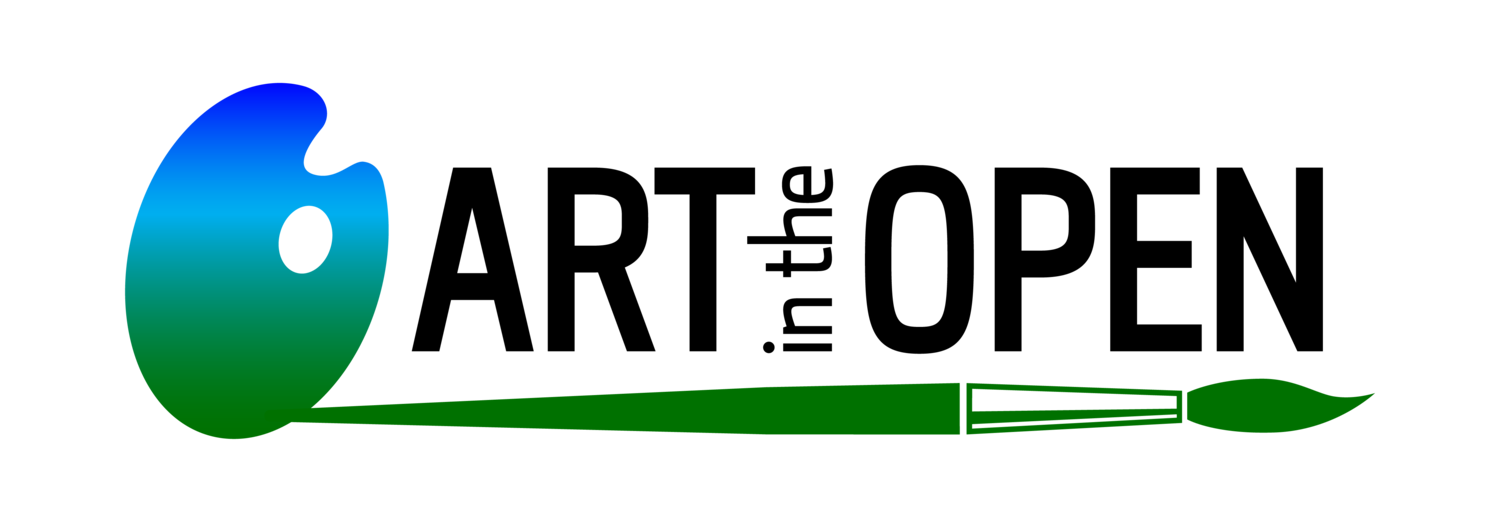New to painting en plein air?
15 Steps to making a successful painting outdoors: Courtesy of pleineire.com
SET A TIME LIMIT: Depending on conditions, usually one and a half or 2 hours is the most that can be spent on one painting outside before the scene has changed too much to usefully continue. On an overcast day you can sometimes work longer. It takes practice but aim to complete in the time decided at the outset. Remember, it’s far better to complete a one and a half hour painting than to half-finish a 3 hour painting.
SQUINT to see values and to simplify. Use a VIEWFINDER to find and crop possible views.
THUMBNAIL SKETCHES : Make several sketches until you have a good composition with a focal point (centre of interest) and an interesting distribution of large dark and light shapes. A weak composition at the start can only lead to an unsatisfying painting at the end. At the beginning, treat smaller areas, such as a copse of trees or a crowd of people as a single mass.
FOCAL POINT: Find one in your painting and stick with it even if other areas catch your interest as you paint.
COLOR KEY AND VALUE KEY: Decide whether the painting will be predominantly Warm or Cool, High key or Low key. What will be the predominant hue? Values (tones) may be set lighter or darker than you see them, as long as the value relationships should stay true to life. Set down a couple of key colours and values, relate others correctly to them.
DESIGN: Transpose the best thumbnail to canvas, creating large, interesting puzzle-piece shapes. Wherever possible, connect up the light patches and similarly, link together individual islands of shadow. Some prefer if the canvas or panel is already toned in a neutral or a complementary colour to the subject, eg. an orange-brown wash under a predominantly green landscape.
THE BLOCK-IN : Make a loose, sketchy underpainting of shapes with dilute or scrubbed-in thin paint (either in monochrome or in broad colour areas to begin with).
DARKS: Paint darks thinly. This is fundamental to alla prima oil technique. It prevents muddy light colours and creates transparent shadows.
PAINT THE BIG SHAPES: Match or accentuate the average color in large shapes, without using too thick paint.
KEEP SQUINTING! Don't be tempted to peer into shadows (which will make them appear lighter than they are) or to see fine detail where it should be suggested. Concentrate on the overall relationships.
COLOUR PATCHES: Break larger shapes into smaller patches of colour. But maintain the integrity of large shapes by modulating colour rather than value within them.
PERSPECTIVE: Yellow diminishes in far distant shapes where blues and violets tend to predominate and the reverse is true in the foreground where the red and yellow family colours are generally more clearly seen. Look for these clues in the landscape before you and check that your painting shows this.
ASSESS your painting. Does it convey the atmosphere or your original idea and inspiration for choosing this subject? Does it have a dominant focal point? Is any detail contributing or fussy?
FINISHING TOUCHES: Add thick touches (perhaps with a palette knife) for highlights, and thin DARK accents as the painting requires. Soften or cool receding edges. Reaffirm the focal area with value contrast or complementary colour but don’t overdo the highlights and accents.
KNOW WHEN TO STOP: After all, it’s a field study. A painting left slightly unfinished is always better than one which is over-worked.


